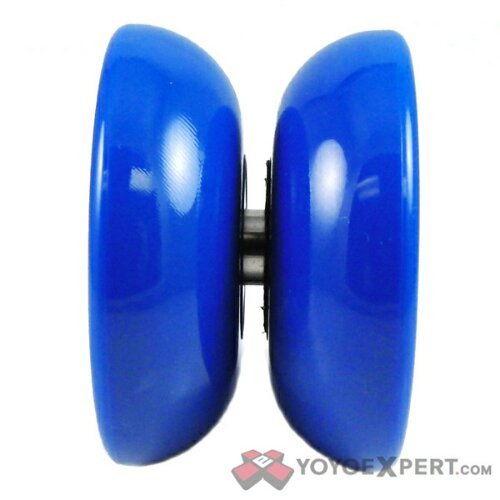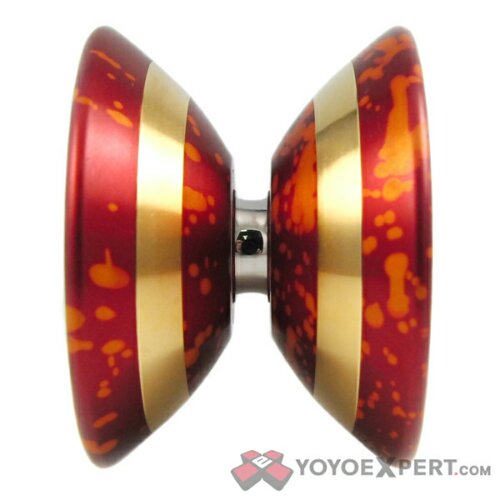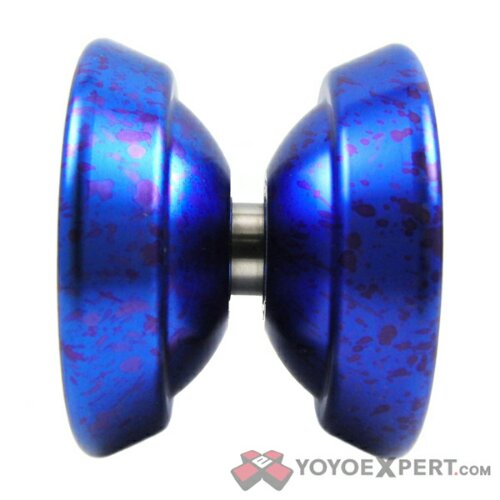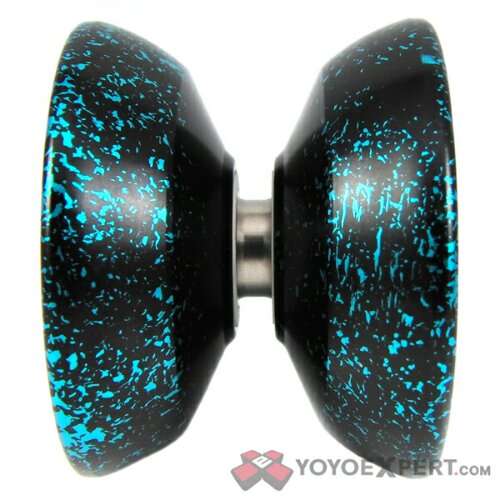Those who just started out yo-yoing will always face the same problem: What yo-yo should I get? Here at BadYoyos, I will help guide you through the process of choosing the right throw for you. With the many different types of yo-yos available in the market out there, it’s easy to become overwhelmed by the sheer amount of choices out there. After the jump, we’ll go through a step by step guide on choosing your first throw.
PART 1 : KNOW YOUR YO-YO
First and foremost, here are some basic information about how modern yo-yoing is like today.
The 5 Different Styles of Play
Yo-yoing today has 5 offical WYYC divisions:
1A : Single yo-yo, String Play
2A : Dual yo-yos, Looping Play
3A : Dual yo-yos, String Play
4A : Single/Multiple yo-yo(s), Offstring Play
5A : Single/Multiple yo-yo(s), Freehand Play
Naturally, there exists yo-yos that are optimised for each style of play, to give better performance to players who specialize in such divisions.
For beginners, it’s recommended that you start with a 1A yo-yo, and once you progress you begin exploring the different divisions, and finally you settle with those that you prefer.
Responsive and Unresponsive
Responsive yo-yos refer to those that are played the classic way: You throw it down, and it comes right back up. However, the modern yo-yo is designed to stay spinning at the end of the string no matter what, and only until you perform a bind will it return to your hand. This is because modern tricks have become so complicated that the classic tug-response yo-yo is no longer suitable to perform such tricks. The exception is with 2A yo-yos, as looping play is heavily reliant upon a yo-yo’s responsiveness. Some players also use responsive yo-yos for the 3A division, as it is sometimes difficult to bind two yo-yos at the same time.
Today, many popular brands offer yo-yos that can be configured between a responsive and an unresponsive setup. An example is the YoyoFactory One, which though a simple bearing change, changes the yo-yo from a beginner’s responsive yo-yo to an intermediate player’s unresponsive yo-yo suitable for modern tricks.
Shapes
Back in the day, there were only 3 yo-yo shapes. The Imperial, the Butterfly, and the Modified (A combination of the Imperial and the Butterfly). These days that roster has expanded to include many different variations. Here’s a quick look at some of the most common ones for string-play.
a) Classic Butterfly

This is the basic butterfly shape, basically made of two half-circles joined at a tangent. All other types of shapes are variations of this basic shape. This is what I recommend for beginners as it is the most comfortable to hold.
b) V-Shape

This a more aggressive version of the butterfly, designed to make it easier to catch the yo-yo on the string. This shape also makes it perfect for off-axis/horizontal play
c) High-walled

There are many variations of this, but high-walled yo-yos generally have a flat wall around the bearing/response area. This generally makes the yo-yo easier to tilt-correct, but for the same reason it may also cause the yo-yo to tilt and slow down when played off-axis/horizontal.
d) H-Shape

This is one of the newest and most radical shapes to be created. By focusing the weight right on the rim, H-shaped yo-yos are known for being extremely stable and resistant to tilting, making them the yo-yo of choice for competitive players. This is also a good shape for those who play 5A (Freehand).
e) Stepped/Raised response

First developed by Turning Point, this new shape is designed to prevent the string from rubbing too much against the yo-yo when it goes off-axis. This allows the player to perform long and complicated off-axis/horizontal tricks, as well as 5A.
There are many more other shapes, but these are the most common ones you’ll encounter.
Size
Even yo-yos come in different sizes! Choosing the right size is important as a yo-yo that is too big or too small for you might be too uncomfortable to handle.
a) Full-sized
Generally refers to yo-yos that are 55mm-57mm in diameter. This is the most common size as they are easy to catch on the string and are usually quite stable. Beginners are recommended to choose this size.
b) Mid-sized
Anything less than 55mm but more than 50mm are considered mid-sized. This offers a nice balance between a yo-yo that is easy to catch on the string as well as ones that can easily move inside complicated mounts. It is also suitable for those who have smaller hands, or those who find full-sized yo-yos difficult to handle.
c) Undersized
Yo-yos that are around 50mm, or even up 52mm in diameter are in the undersized category. Yo-yos of this size are popular amongst players who make use of chopsticks-style tricks, or string mounts that have very small spaces in between for the yo-yo to pass through. Beginners may find yo-yos like this hard to play with, as the catch area is sometimes very small.
d) Oversized
Anything over 57mm is oversized. Some players, especially professional performers, find the larger size makes a yo-yo more visible on stage, and the extremely large size makes for a yo-yo that is very easy to catch. Most, if not all 4A players use oversized yo-yos.
e) Extremely undersized/miniature
49mm or less. Yo-yos this size are easy to carry around, but can take a lot of getting used to. But one who can master a miniature yo-yo certainly can play any type of yo-yo 🙂
As for yo-yo width, most should be around 40mm. Some 3A players use yo-yos that are thinner, because wide yo-yos may get caught in the extremely complicated mounts that only exist in 3A. Some yo-yos can be extremely wide, sometimes even wider than the diameter itself! However, it’s important to just pick a size that you are comfortable with.
Material
There are two main types of materials used to make yo-yos:
1) Plastic
Plastic yo-yos are generally cheaper and easy to manufacture, hence a large part of a store’s catalog would comprise of plastic yo-yos. Some plastics are very durable, and often used to make 4A and 5A yo-yos. Some yo-yos use a high grade of plastic known as Delrin, which is stronger than normal plastic and has a smooth, silky feel. Delrin yo-yos are considered high-end plastics, and offer performance almost equivalent to that of machined metal yo-yos, as they are made the same way. Some companies like YoyoJam make yo-yos that are molded with a metal rim, giving the yo-yo an improved weight distribution.
2) Metal
Generally, this refers to yo-yos that are machined out of aluminium. These yo-yos are much smoother and can spin longer than plastics, thanks to the higher density of the material and tighter manufacturing tolerances. Seasoned players who wish to get the most out of their play should opt for metals. However, bear in mind that unlike plastic yo-yos, metals can be dangerous if not played with correctly, and there is a risk of serious injury if you lose control over the yo-yo and hit yourself. Some metal yo-yos require regular maintenance in order to give the best performance.
Weight
Yo-yos generally weigh between 60-70 grams. I find that a weight somewhere between 66-68 grams is just nice for most people starting out. Different weights can give a yo-yo a different feel, so manufacturers would tune the weight right up to the milligram to give the right feel for their yo-yo. Generally, lighter yo-yos play faster but can be floaty or unstable. Heavier yo-yos are rock steady but play slowly and can take some effort to throw. There are exceptions to this rule though, as manufacturers sometime distribute the weight differently, so sometimes a 70 gram yo-yo can play pretty fast.
Bearings
In string play yo-yos, you will encounter 3 common bearing sizes:
Size-C (.250″ X .500″ X .187″) – Also known as the “Large Bearing” this is the most common size found on most yo-yos.
Size-A (5mm X 10mm X 4mm) – Also known as the “Small Bearing” it is commonly used by Duncan as well as yo-yos used for looping play.
Size-D (5mm X 11mm X 5mm) – Yo-yos that are made in Europe commonly use this size. It is somewhat between a Large bearing and a Small bearing in size.
The bearing surface itself have different shapes. Normal bearings are flat, but there are string-centering shapes such as the Konkave and the Center-Trac. The purpose of these bearings is to keep the string from rubbing against the response, thus reducing the chance of the yo-yo snagging mid-play. Bearing that centre the string right in the middle also keeps the yo-yo balanced while spinning and prevents it from tilting. I find that for normal play a flat bearing with a large gap is just good enough, though there is no harm is getting one of these specialised bearings, especially as a spare.
There are special materials, like gold coating or ceramic bearings which have less friction than the normal stainless bearing. My advice is to stick to normal stainless-steel bearings whenever possible as they are usually the most reliable and longer-lasting. It’s also a good idea to get some lubricant for you bearing, in order to keep it spinning smooth and to prevent it from locking-up due to excessive friction.
Response
A response system is a surface for the string to grab onto when you want the yo-yo to return to the hand. Modern yo-yos use slim silicone pads, but certain yo-yos may have unique pad sizes or even types of response material. When purchasing your yo-yo make sure you purchase a few sets of replacements as well. Good silicone pads should last for a long time, but once you feel the yo-yo is too difficult to bind and return, the pads should be changed.
PART 2 : THE CHECKLIST
So now that you are familiar with what elements to look for, let’s get down the list of things to do before you go shopping.
A) Plan your budget
Sure, you can go ahead and chase your dream yo-yo, but unless you have a steady income its very likely that you’re unable to afford it. So before you start scouring the web, plan in advance how much you’re willing to spend on buying a yo-yo. If you’re under-aged, it’s very important to discuss this with your parents first.
As for numbers, I recommend a starting budget of US$20 for those starting out. They’re plenty of choices within this budget range thankfully. However, if you’re looking for something to invest in for the future, A budget of around US$40-50 will give you good choices of high-performance plastic-metal hybrids, and occasionally an entry-level metal yo-yo.
You should also setup an online payment method. Most online stores allow the use of Paypal, which in turn requires an active Debit or a Credit Card. There are also some stores that allow you to send cash via Bank Transfer, but you will need to send them a scanned copy of the transfer slip in order to complete the transaction. Most will also require a shipping fee, especially for those who are buying from overseas. Bear in mind that shipping over longer distances may incur higher costs.
B) Grade your skill level
It’s important that you don’t pick a yo-yo that you’re unable to handle. A good way of gauging your skill level is to see up to what level of tricks you’re able to do from the YoyoExpert Trick list. Most online store categorise their yo-yos according to skill level, so you’ll be able to pick out one that’s just right for you. Also take into consideration yo-yos like the Dark Magic 2 that can be made unresponsive once you’ve mastered the basics.
C) Reach out to your peers
Get in touch with your local yo-yo club or association. Most of the time the people should be able to help you out if you’re just starting out, and many can offer good advice. Also, it is a good opportunity for you to try out some yo-yos for yourself. Be sure to ask for permission first, though.
If there isn’t a active yo-yo community in your area, you can also get on Facebook and get in touch with the many internet-active throwers out there. Not all may answer your messages, but there’s a good chance you’ll make friends with a few personalities that will be willing to help you out. Just ensure that all your messages are polite and genuine. The more friendly and polite you sound, the more likely he/she will reply to you. Also, please do not spam-tag or constantly message someone, as you may end up annoying them enough to block you.
Another good place to go to are public forums like theyo.com, yoyoexpert.com or the onedropyoyos.com forums, just to name a few, that have an active community who are willing to advise newbies. Naturally, each have their own set rules and etiquette that are important to take note of if you’re unfamiliar with message boards..
D) Do your research
Get to know terminology and phases that are unique to the yo-yoing community. Words like “Laceration”, “Off-hand” or “Bead-blasted” may not make sense to the average joe. But thankfully, a good site for all your yo-yo knowledge needs is yoyowiki.org. Also, watch out for yo-yo review blogs like high-speed yo-yo, or forum sections dedicated to reviews, as reviews can help a lot when deciding on your choice of yo-yo.
Remember, knowledge is power. The more you know, the more likely you will make the right choice.
PART 3 : SHOPPING
Here’s a list of a few good places to go to when you shop online
yoyoexpert.com (USA)
yoyobestbuy.com (USA)
yoyonation.com (USA)
euro-yo.com (UK)
yoyoz.co.uk (UK)
throw-yoyo.co.uk (UK)
yoyostorerewind.com (Japan)
28spin.com (M’sia)
spinworkx.com (Singapore)
In case you have no idea where to start, here’s a list of some of my own personal recommendations for the absolute beginner.
i) Yoyofactory One/Whip
Probably the best yo-yo for anyone to jump into yo-yoing. They allow you to switch between a slim bearing for responsive play, and a large bearing for unresponsive play. Good size and weight even for young children but performs just as good as a regular yo-yo.
ii) Duncan Pro Z
This yo-yo is unique as it allows you to switch between a Slim Butterfly Shape and a wider H-Shape.
iii) YoyoJam Journey/Lyn Fury/Kickside
These 3 yo-yos come responsive, but can be modded with silicone and a bearing replacement for great unresponsive performance.
iv) YoyoJam Legacy
This is a good choice if you want a yo-yo that can you can use to learn the basics, and then continue up to even the advanced levels of yo-yoing. It’s weighty, solid, stable, and pretty affordable too. One of the yo-yos I highly recommend.
However, if you’re pretty solid with your yo-yo skills, you can opt to try out an Unresponsive-only yo-yo. Here’s a few good ones to choose from.
i) YoyoFactory Protostar/Northstar
These are the premier high-performance plastic yo-yos. The Northstar is also known as the plastic yo-yo that won worlds in 2010, when Metal yo-yos are the norm onstage.
ii) AdegleYoyos Asteroid
Full sized and great for those on a budget, the Asteroid with it’s unbelievably low price makes for a yo-yo that few would hesitate to add to their collection.
iii) YoyoFactory Counter Attack
Having the weight rings of a protostar and the shape of a Grind-Machine, the Counter Attack is quite underrated in my opinion. It’s also cheaper than it’s cousin, the Protostar, so it’s definitely something you can consider.
iv) YoyoJam Dark Magic 2
Technically, this yo-yo also comes responsive (with a slim bearing), but the metal rims certainly makes this a high-performance yo-yo. It’s also big and weighty, perfect for both beginners and seasoned players alike.
v) Duncan Raptor
One of the most affordable full-metal yo-yos, and a great one to start your introduction to all-aluminium yo-yos with. It also comes with removable caps, so you’ll have a yo-yo that’s either fast and precise, or one that’s solid and floaty.
DON’T FORGET: It’s a good idea to buy some replacement pads and extra strings along with your yo-yo. Over time strings and pads need to replaced, more often if you throw frequently.
PART 4 : MAKING THE PURCHASE
Once you have made your decision, it’s then time to finalize your purchase. Normally, the procedure for buying online goes like this:
1) Select the product you wish to purchase
2) Choose “Add to Cart”
3) Open the Online Shopping Cart and choose “Checkout”
4) Fill in your details e.g. name, shipping address, type of shipping, method of payment etc.
5) when redirected to an online payment service, login and have the payment made
6) Check your email inbox for the payment receipt and invoice.
The above procedure is true if you choose to use Paypal or an equivalent. However, should you choose to send cash via Bank Transfer, then you’re required to scan and email a copy of the ATM’s receipt to the online store in order to confirm that the payment has been made.
If at any point you are uncertain, do consult with people who have had experience in making online purchases.
Shipping of a package is largely dependant on the distance between the sender and the recipient. The person in charge of your order should be able to give an estimate on the time it would take for your order to arrive, and would also provide a tracking I.D. which you can use to track the package’s status as it is being shipped. Should the package not arrive within the expected time frame, do not hesitate to inform the online store immediately.
Other than that, it’ll simply be just a period of waiting for the package to arrive. Once it does, feel free to enjoy the purchase that you have just made!
That’s all for now and thanks for reading! Please do post in the comments section if you have something to add or have any general queries. I may not be able to answer all of them but I will try my best. Till next time, good luck and have a nice day 🙂
